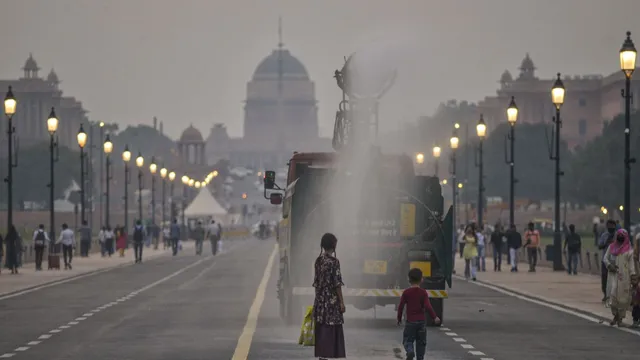- By Priyanka Koul
- Wed, 05 Nov 2025 07:50 AM (IST)
- Source:JND
Delhi AQI Today: Delhi experienced some relief on Wednesday morning as air quality showed a marginal improvement compared to Tuesday, though the city continued to remain under a blanket of smog and dust. Residents, however, still reported irritation in their eyes and difficulty breathing upon stepping outdoors.
According to data from the Central Pollution Control Board (CPCB), the Air Quality Index (AQI) in the national capital stood at 281 at 7 am, placing it in the "poor" category. On Tuesday, the AQI was recorded at 309, in the "very poor" range. The slight improvement follows two consecutive days of severe pollution, when the AQI reached 316 on Monday and 309 on Tuesday.

Despite the dip in pollution levels, air quality across several areas of Delhi remained concerning. Lodhi Road recorded relatively better air, with an AQI of 145 categorised as "moderate." In contrast, ITO and nearby areas reported an AQI of 276, falling under the "poor" category.

Anand Vihar recorded an AQI of 280 ("poor"), while Punjabi Bagh reported 224 ("poor"). The Dwarka area saw relatively cleaner air with an AQI of 188, which falls in the "moderate" range.
Noida recorded an AQI of 227 at 7 am around the Sector 1 area, while the AQI stood at 172 classified as “moderate” near Sector 62.
View this post on Instagram
Meanwhile, Gurugram recorded an AQI of 300 near the Vikas Sadan monitoring station, placing it in the “very poor” category, while the reading near Sector 51 was 263, falling under the “poor” category.
An AQI between 0 and 50 is considered 'good', 51-100 'satisfactory', 101-200 'moderate', 201-300 'poor', 301-400 'very poor', and 401-500 'severe'.
Authorities have continued deploying truck-mounted water sprinklers and other dust-control measures across the city to help curb rising pollution levels.
According to the India Meteorological Department (IMD), Delhi is expected to witness clear skies with light smog in the early hours.
Since Diwali, the city’s air quality has largely remained between the "poor" and "very poor" categories, even as Stage 2 of the Graded Response Action Plan (GRAP) remains in force across the National Capital Region (NCR).

